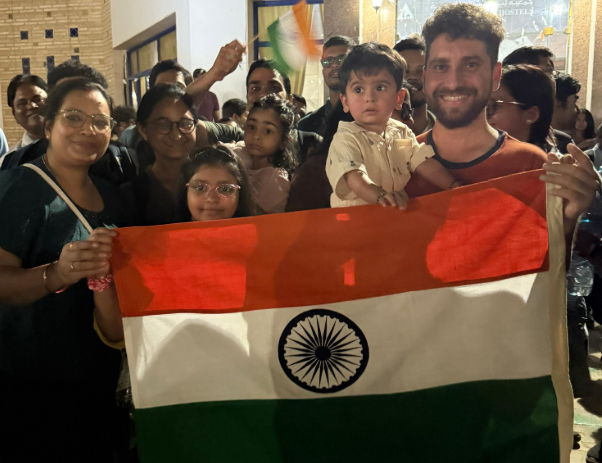
As tensions continue to escalate in West Asia, India has once again demonstrated its unwavering commitment to the safety of its citizens and its responsible role on the global stage. Amidst the growing conflict between Iran and Israel, the Indian government has launched an extraordinary evacuation mission, codenamed Operation Sindhu, to safely bring home Indian nationals and citizens of friendly nations caught in the conflict zones.
The situation in West Asia has grown increasingly volatile, particularly after the outbreak of hostilities between Iran and Israel. Both countries have exchanged hundreds of missile and drone strikes targeting cities, military installations, and strategic infrastructure. The situation turned even more critical on June 22 when the United States conducted airstrikes on three major Iranian nuclear facilities, pushing the region further towards a dangerous brink. In response to these developments, India acted swiftly and decisively.
Understanding the gravity of the situation, the Indian government promptly initiated Operation Sindhu. The Indian Air Force (IAF), known for its impeccable readiness, has played a frontline role in this massive humanitarian effort. Utilizing C-17 Globemaster aircraft, the IAF has conducted multiple evacuation sorties from Jordan and Egypt, safely bringing back not only Indian nationals but also citizens from friendly countries. This once again highlights India's capability and commitment to act as a first responder in times of global crisis.
Since the onset of the Iran-Israel conflict, India has remained vigilant and proactive. Even before Operation Sindhu was officially launched, special evacuation flights were already operational. On June 22, a special flight carrying 285 Indian citizens safely landed at Delhi Airport from Iran. Furthermore, Indians who had managed to reach safer zones like Jordan were also airlifted back to India. So far, under Operation Sindhu, more than 1,700 Indian nationals have been successfully evacuated.
India’s evacuation efforts have not been limited to just Iran and Israel. Recognizing the complex and fast-evolving nature of the conflict, the Indian government extended its evacuation operations to other regions where Indian citizens were potentially at risk. Charter flights were arranged from Mashhad in Iran, Yerevan in Armenia, and Ashgabat in Turkmenistan to ensure the safe return of all Indian nationals. On June 20, after receiving limited airspace clearance from Iranian authorities, three flights were permitted to depart from Mashhad, facilitating the evacuation of stranded Indians.
Throughout this crisis, India has exhibited remarkable diplomatic balance and maturity. Even as the world watched the conflict escalate, India maintained its long-standing principle of peaceful resolution and dialogue. Without any aggressive rhetoric, India consistently called for peace and prioritized the safety and well-being of its citizens above all. The Indian government’s measured approach, combining quiet diplomacy with swift humanitarian action, has earned it global appreciation.
In the latest developments, U.S. President Donald Trump has announced a ceasefire agreement between Iran and Israel, raising hopes that the conflict may soon subside. However, regardless of the evolving situation, India's swift response has once again proven its capacity to protect its people in the most challenging international circumstances.
India’s Operation Sindhu is not merely an evacuation mission—it is a shining example of India’s growing role as a responsible global power, demonstrating empathy, courage, and commitment to international peace and security. The Indian Air Force, the diplomatic corps, and countless government officials involved in this operation have showcased the best of India’s crisis management capabilities.
In times of global uncertainty, India has shown that it does not shy away from responsibility. It steps forward, not only for its own citizens but also to assist friendly nations, setting an example of global leadership defined by compassion, balance, and swift action.
Disclaimer:
This article is based on available news reports and official statements as of June 2025. The situation in West Asia remains fluid, and updates may continue to evolve. Readers are advised to follow official government sources for the latest information.




